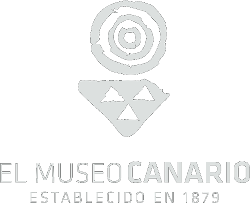Natural sciences
The Canary Museum has, since its foundation, an important fund of Natural Sciences that is currently deposited in the warehouses of the institution. Many of these collections are made up of ancient museum objects, given the little or no updating of materials that has occurred throughout their history. This background is divided into five collections:
Vertebrate Collection
It consists of less than a thousand specimens of birds, fish, mammals, reptiles and amphibians that are stored mostly naturalized, or submerged in preservative liquid – alcohol or formalin. Most of the collection is made up of complete specimens, and to a lesser extent parts or fragments of individuals are stored. It also has a small sample of osteological material formed by skeletons of disarticulated and mounted birds and skulls of mammals.
The collection preserves representations of the fauna of the Canary archipelago and specimens from different parts of the world, which do not form a homogeneous group.
In general, this collection is composed of ancient museum specimens, many of them from private donations and exchanges. Others were prepared at the Museum by taxidermists Gabriel Garachico and Gustav Kircher.
Entomological Collections
They are formed by various groups of arthropods, among which stands out the corresponding insects, composed of specimens that are mostly grouped in one of the following orders: Coleoptera, Lepidoptera, Diptera and Orthoptera. From a geographical point of view these are representations of the entomological fauna of the Canary archipelago, especially collected in different areas of Gran Canaria, which are completed with specimens from the nearest African coast.
The collections are kept in their entirety dry, mounted with pins and wooden boxes prepared for this purpose. Today it is the worst preserved material of all who make up this fund.
Malacology Collection
It is one of the most important, not only numerically but for its content. It consists of about 8,000 shells of molluscs that are grouped into two sections, which corresponds to the general malacology and that of the Canary archipelago. It is one of the few collections that counts together with the ancient museum objects, gathered mostly through private donations, with recent material, which comes almost entirely from the deposit that in 1995 made the Cabildo de Gran Canaria from the collection of malacological material of Mr. Manuel Bermejo Pérez, formed by more than 4,000 specimens.
Collection of Rocks and Minerals
The group of original materials, consisting of rocks and minerals from the Canary Islands, was increased over the years thanks to several projects and initiatives of the institution, such as the commission made, in the 1950s, to the Finnish geologist Hans Hausen for the elaboration of the geological maps of the eastern islands of the Canary archipelago, which generated the collection and preparation of much of the collection of rocks and minerals that generated the collection and preparation of much of the collection of rocks and minerals that generated the collection and preparation of much of the collection of rocks and minerals that generated the collection and preparation of much of the collection of rocks and minerals that generated the collection and preparation of much of the collection of rocks and minerals that generated the collection and preparation of much of the collection of rocks and minerals that generated the collection and preparation of much of the collection of rocks and minerals that generated the collection and preparation of much of the collection of rocks and minerals that generated the collection and preparation of much of the collection of rocks and minerals that generated the collection and preparation of much of the collection of rocks and minerals that generated the collection and preparation of much of the collection of rocks and minerals that generated the collection and preparation of much of the collection of rocks and minerals that generated the collection and preparation of much of the collection of rocks and minerals that generated the collection and preparation of much of the collection of , of these islands, are preserved in The Canary Museum.
The foreign collection consists of several donations. Highlights include the collection of Uruguayan rocks presented by the Geological Museum of Montevideo to The Museo Canario.
Paleontological Collection
It is composed of a set of ancient materials, from the time of the foundation of the Museum, which were collected at the fossil level corresponding to the dethritic formation of Las Palmas, dated to the Miocene, and traditionally known as Terraza de Las Palmas. It is completed with fossils collected in the 70s in Lanzarote and Fuerteventura during the elaboration of several research works. This collection has been augmented by small recent contributions of materials. A collection of foreign fossils gathered for comparative study is also preserved.

